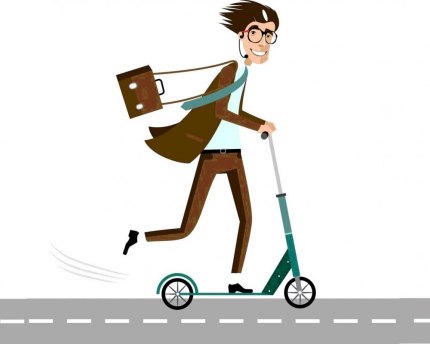
Are e-scooters really good news for the environment?
-- Jim M. Salisbury, Connecticut
By now, you’ve seen dockless e-scooters in your town or nearby. Some 85,000 of these electric-powered, phone-unlockable mini-vehicles crowd the streets and sidewalks of 100 metro areas across the U.S. In 2018 they surpassed dockless e-bikes as the most common app-rentable transport option nationwide, with riders taking them on some 38.5 million trips.
These e-scooters are often marketed as green or carbon-neutral because they run off electric batteries instead of fossil fuels, but consumers shouldn’t think they’re getting a guilt-free ride. A recent analysis from North Carolina State University assessing the cradle-to-grave environmental impact of e-scooters found that bicycling, walking and buses are all greener ways to get around.
A rider hopping on an e-scooter doesn’t necessarily think about the carbon emissions and other impacts involved with manufacturing, transporting and maintaining these otherwise low-impact electric vehicles. “If you only think about the segment of the life cycle you can see, which would be standing on the e-scooter where there’s no tailpipe, it’s easy to make that assumption,” says Jeremiah Johnson, a North Carolina State professor and co-author of the study on e-scooters. “But if you take a step back, you can see all the other things that are a bit hidden in the process.”
While relatively light and small, e-scooters must carry a battery in addition to their basic frame and electronic systems. Producing these batteries takes a heavy toll on the environment, although no worse than similar types of batteries used in e-bikes and even electric cars. Besides the batteries, the aluminum used to create e-scooters’ frames and the rubber for their tires add to their environmental footprint.
The North Carolina State researchers found that about half of an e-scooter’s carbon footprint is created during production, while most of the rest (43 percent) comes from collecting and recharging them every night. In general, e-scooters are charged by freelance workers known as juicers. At the end of each day, they take e-scooters off the street and typically charge them up at home via their own power outlets (likely not from renewable sources). Furthermore, the majority of juicers pick up e-scooters in gas-powered cars or trucks. The upshot is that the common charging process is a long way from being carbon neutral.
That said, e-scooters are currently about twice as efficient as the average car in per passenger miles per gallon. However, a car carrying more than one passenger can reach the same or even better levels of efficiency as an e-scooter. Buses, when fully loaded, easily beat e-scooters in per passenger efficiency. Bicycles easily beat buses.
Of course, e-scooters are sure to become more efficient in the future as both the production and pickup processes get greener. As a consumer, you can improve the situation by using e-scooters to replace car trips, but bikes or buses are still a better choice as far as the planet is concerned.
Related:
Are e-bikes better for the environment?
Can we encourage commuters to take bikes?
This column was reprinted with permission. EarthTalk is produced by Roddy Scheer and Doug Moss and is a registered trademark of the nonprofit Earth Action Network. To donate, visit www.earthtalk.org. Send questions to: question@earthtalk.org.
Like us on Facebook and tell us what you think.